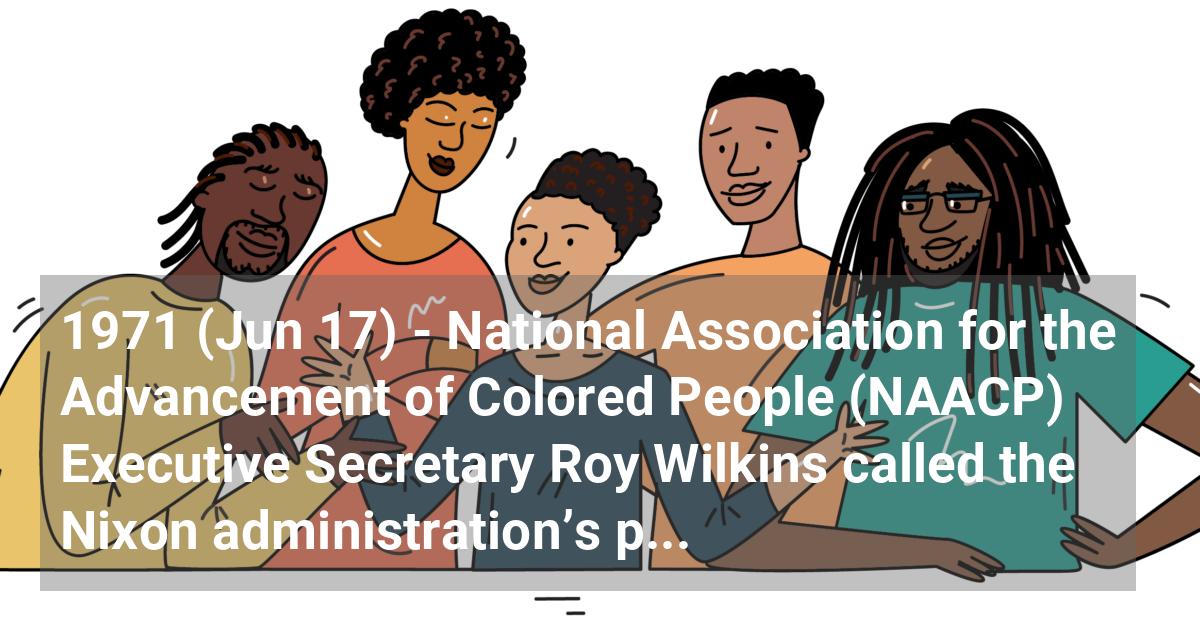Home / Full timeline / National Association for the Advancement of Colored People (NAACP) Executive Secretary Roy Wilkins called the Nixon administration’s policy on housing discrimination a “timid tightrope walking act of the greatest kind.”
 National Association for the Advancement of Colored People (NAACP) Executive Secretary Roy Wilkins called the Nixon administration’s policy on housing discrimination a “timid tightrope walking act of the greatest kind.”
National Association for the Advancement of Colored People (NAACP) Executive Secretary Roy Wilkins called the Nixon administration’s policy on housing discrimination a “timid tightrope walking act of the greatest kind.”
1971 (Jun 17)
NAACP Executive Secretary Roy Wilkins called the Nixon administration's policy on housing discrimination a "timid tightrope walking act of the greatest kind." Wilkins challenged President Nixon to exert more positive federal power to help Blacks move to the suburbs in search of employment. "The issue of the 1970's now appears to be whether the Black population will be able to move into the suburbs in pursuit of jobs that are moving to the suburbs," Wilkins declared. "The fifteen-page statement issued last week by the White House had done nothing to solve that problem." President Nixon had announced on June 11, that he would enforce federal laws preventing racial discrimination in housing but would not force communities to accept low-cost housing for Blacks or Whites. According to an Atlanta Constitution report, Wilkins also said that "Mr. Nixon ought to stop going around saying he does not want to enforce integration of the suburbs, because he is using the language and nomenclature of those who simply do not want Negroes in the suburbs." Wilkins made his criticisms of the president at a panel discussion called "The Status of Civil Rights in 1971" at the annual meeting of the Black National Newspapers Publishers Association in Atlanta.
References:
- • Hornsby, Alton. Chronology of African-American History: Significant Events and People from 1619 to the Present. Detroit: Gale Research, 1995.
